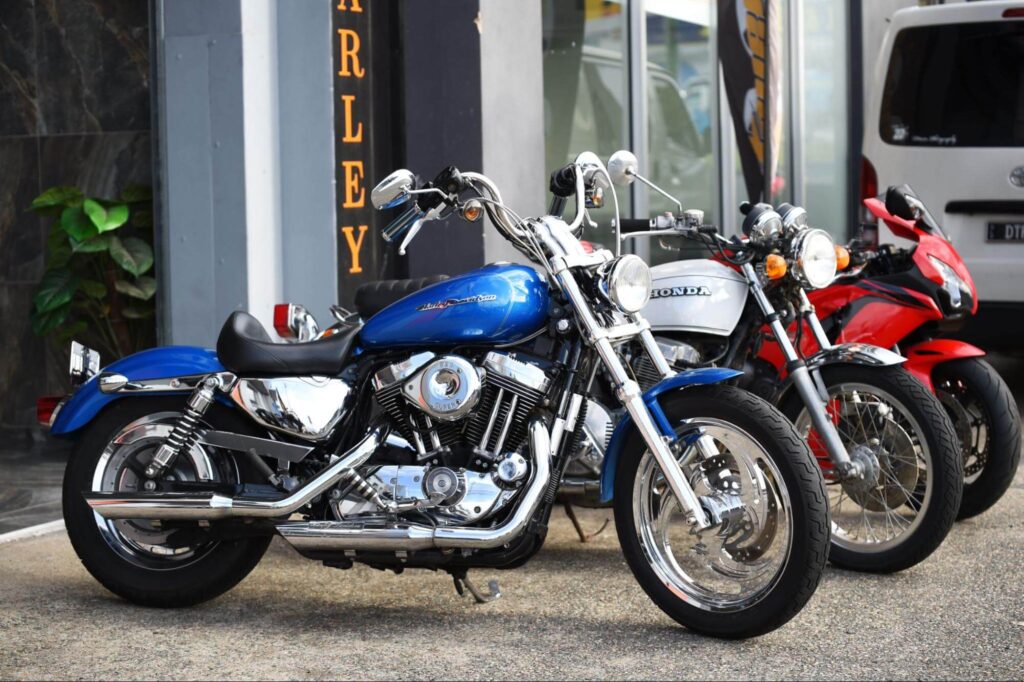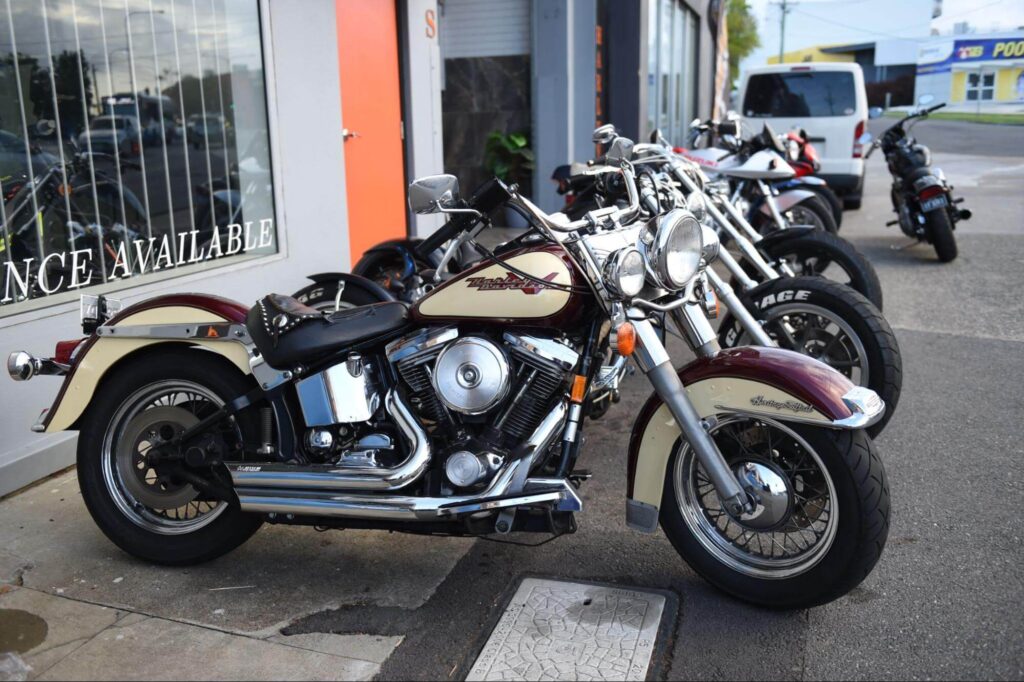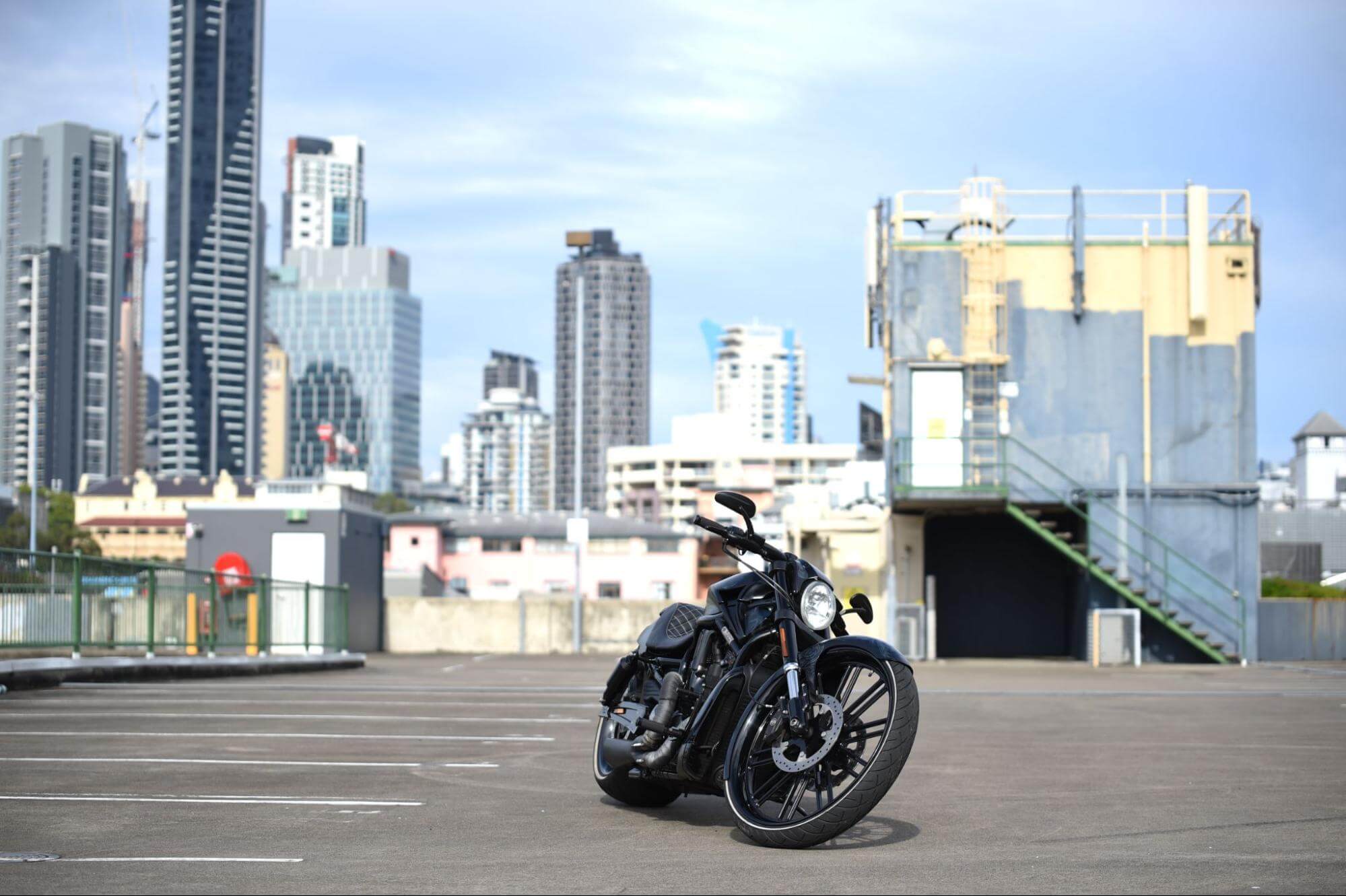If the engine is the beating heart of a motorcycle, and the frame is the body, then the fluids are the blood that keeps it running. When it comes to routine maintenance, it’s important to stay on top of your motorcycle’s oils and fluids.
In this article, we’ll explain the types of motorcycle oil and fluids required to keep your bike running and the different options available. It’s important to understand what they are, when they need to be changed, and how to change them to stay on top of minor servicing.
For example, engine oil is one of the most critical fluids for your motorcycle—it can’t run without it. It plays multiple roles in the motorcycle’s engine, including lubrication, cooling, sealing, cleaning, and corrosion protection.
There are three different types of motorcycle engine oil—synthetic, semi-synthetic, and mineral. Which oil is best will depend on the make and model of your bike. The manufacturer of a model will indicate which type of oil is best in the owner’s manual.
In our guide, we’ll break down each type of oil and provide general servicing information. We’ll also cover other essential liquids for your bike, including motorcycle radiator fluid and brake fluid.
The Different Motorcycle Engine Oils

Inside your motorcycle’s motor, there are so many components spinning and moving—some of them at a hundred times per second. All of these components rely on the engine oil to keep it lubricated with a thin layer.
Below are the different types of oils you find in a motorcycle, from mineral-based to synthetic. It’s essential to understand the differences and why it’s required to keep your motorcycle in top condition.
Mineral-based Engine Oil
Mineral-based oils are derived from crude petroleum, so during the refining process, any unwanted contaminants are eliminated. It’s also cheaper than its synthetic counterparts but isn’t as efficient.
Why It Is Needed
Mineral-based engine oils are ideal for motorcycles with older engines or smaller engine capacities. They’re also great if you are on a budget.
When To Change It
Mineral-based engine oil needs to be changed more frequently than synthetic and semi-synthetic counterparts. It’s recommended to change the oil every 3,000 to 4,500 kilometres for optimal engine efficiency.
How To Change It
The steps to changing mineral-based engine oil are similar to those for other types of engine oil. Overall, the process will take an hour or so. You’ll need the appropriate tools, including safety glasses, a funnel, an oil catch pan or container, and a socket and torque wrench.
You’ll also need new engine oil (check your motorcycle’s owner’s manual for the recommended oil type and quantity) and a new motorcycle oil filter—ensure it’s compatible with the motorcycle’s make and model.
What you’ll want to do is simply drain the old oil and allow it to drain completely from the engine and flow into the oil catch pan. You’ll also want to remove the old oil filter on your motorcycle, which is usually near the engine.
Afterwards, you’ll want to install the new oil filter and tighten it according to the manufacturer’s specifications. Then, use a funnel to add new, fresh oil to the engine through the fill port, being careful to fill the right amount.

Semi-Synthetic Engine Oil
Semi-synthetic engine oil is a great choice if you want good performance in low temperatures and can block oxidation but don’t want to spend the money on full-synthetic oil.
As the name suggests, semi-synthetic is a combination of mineral and synthetic oils. It provides better protection and performance than conventional mineral oil and is slightly more affordable than fully synthetic.
Why It Is Needed
Semi-synthetic engine oil is needed if you want an oil solution that’s a good mid-point between synthetic and mineral. It’s affordable while also providing better protection and performance than conventional mineral oils.
When To Change It
Semi-synthetic engine oil needs to be changed less frequently than mineral-based alternatives, but still more than fully synthetic oils. Semi-synthetic oil should be changed every 8,000–9,000 kilometres.
How To Change It
The process of changing semi-synthetic engine oil is similar to other types of engine oil. You’ll want to follow the similar steps above listed out for mineral-based oil, but instead get fresh semi-synthetic oil to put in the motorcycle after draining out the old oil.
Synthetic-based Engine Oil
The main difference between synthetic-based engine oil and other alternatives, like mineral-based, is that synthetic oils go through sophisticated modifications in a lab. This leads to enhanced performance and protection for the engine, especially under large loads of stress.
Why It Is Needed
Fully synthetic-based oils are most commonly used for newer motorcycle models, and any bike that has a larger capacity (higher than 200cc). These oils work better than any mineral or semi-synthetic oil.
When To Change It
Another bonus of fully synthetic oil is that it doesn’t need to be changed as frequently as semi-synthetic or mineral-based options. Synthetic oil only needs to be changed every 12,000 to 16,000 kilometres.
How To Change It
The process of changing fully synthetic oil is similar to the steps for mineral-based and semi-synthetic oils. After draining the old oil, you’ll want to put fully synthetic oil into the fill port.
Just remember to read the manufacturer’s specifications to get the correct amount of oil and grade. You don’t want to overfill the oil, as that could damage the engine or lead to issues.
The Essential Motorcycle Fluids

Along with engine, transmission, and fork oil, there are also other fluids in your motorcycle. There’s also the brake fluid, coolant, and the hydraulic clutch fluid. They all have an important role in keeping your bike functioning properly and on the road
Motorcycle Brake Fluid
Without brake fluid, your motorcycle won’t be coming to a stop whenever you hit the brakes. It’s essential for any motorcycle to control the brake pads.
Why It Is Needed
Brake fluid is the substance responsible for transmitting the force from the brake lever to the brake pads. Therefore, correct maintenance is necessary to keep your motorcycle running (and stopping) properly.
When To Change It
The quality and efficiency of brake fluid decreases over time, no matter how many kilometres you ride. So, it’s recommended that a motorcycle’s brake fluid be changed every year.
How To Change It
Changing brake fluid is similar to changing other fluids on a motorcycle. First, you’ll want to open the master cylinder reservoir and empty it to purge the old brake fluid. The specifics will depend on your motorcycle’s make and model.
For most bikes, there should be a bleed screw (sometimes called a nipple), which you’ll connect a bleeding kit to, with an air compressor. This will empty the reservoir and braking circuit.
After all the liquid is drained and the reservoir is empty, clean it with a clean cloth. You’ll then be able to fill up the reservoir with new brake fluid and then keep watching the bleeding kit for a colour change.
Once you see a colour change in the bleeding kit (fresh fluid looks lighter than old fluid), tighten the bleed nipple and check the master cylinder level. You also want to ensure there are no air bubbles in the reservoir.
This is just a general guide to changing brake fluid. We always recommend checking the exact instructions because it’ll be different for every motorcycle make and model, and going to a professional if you’re not confident.
Coolant
Coolant is an important part of your motorcycle. It provides temperature-change protection and prevents corrosion and degradation. Coolant, also known as radiator fluid and antifreeze, plays a critical role in the health of your engine.
Why It Is Needed
Coolant plays an integral role in the cooling system of your motorcycle, which is where it gets its name from. If a motorcycle’s engine gets too hot, it can cause catastrophic failure. Coolant and fluids like antifreeze prevent this.
When To Change It
As a general rule of thumb, a motorcycle’s coolant should be changed every 2 years, or 38,000 kilometres—whichever comes first.
How To Change It
When changing your motorcycle’s coolant, it’s important to ensure your bike is cold before starting. Don’t unscrew your radiator cap while the bike is still hot—it could lead to injury and burns.
Similarly to changing oil, you’ll want to get a drain pan and drain out all the old coolant. Your owner’s manual should provide specifics on where the coolant drain plug is located.
After the old coolant drains out, you’ll want to get your fresh coolant ready to go. Just remember, check the coolant bottle. A pre-diluted coolant can go right in; otherwise, you’ll need to mix the concentrate with distilled water.
Minor And Major Motorcycle Servicing At Taverner Motorsports

At Taverner Motorsports, we offer minor and major servicing for motorcycles of classic motorcycles, particularly Harley Davidson and British brands. These services also include checking oil and fluids, as well as replacing the engine, primary, and gearbox oil.
Along with this, our service options include replacing filters, changing spark plugs, adjusting components like the clutch and throttle cables, flushing the brake fluid, and lubing the pivots. In addition to the mechanical aspects, our team can also polish and wax bodywork and treat the upholstery.
When you entrust your vehicle to us for a service or regular maintenance, you’re getting a team with over 50 years of experience in the industry. We go above and beyond to ensure your bike’s performance, safety, and longevity.
Ensure your motorcycle is properly maintained and in top condition today by requesting a quote for a service from our team.
